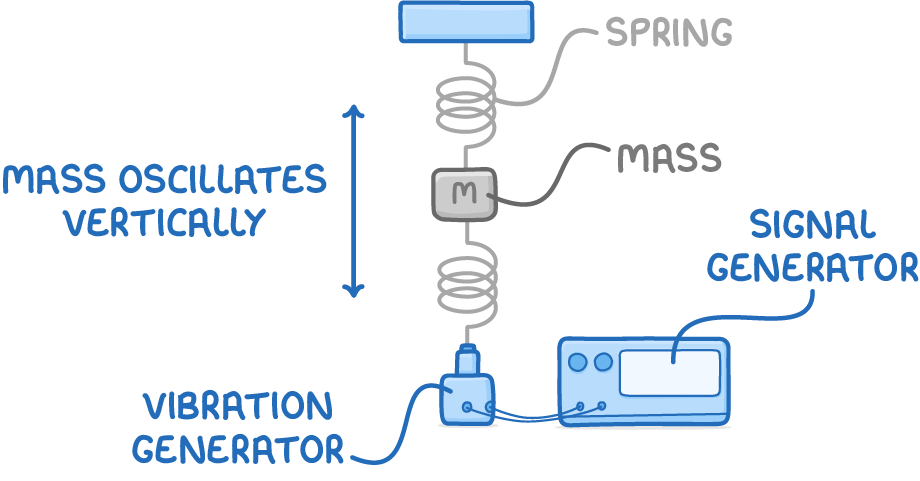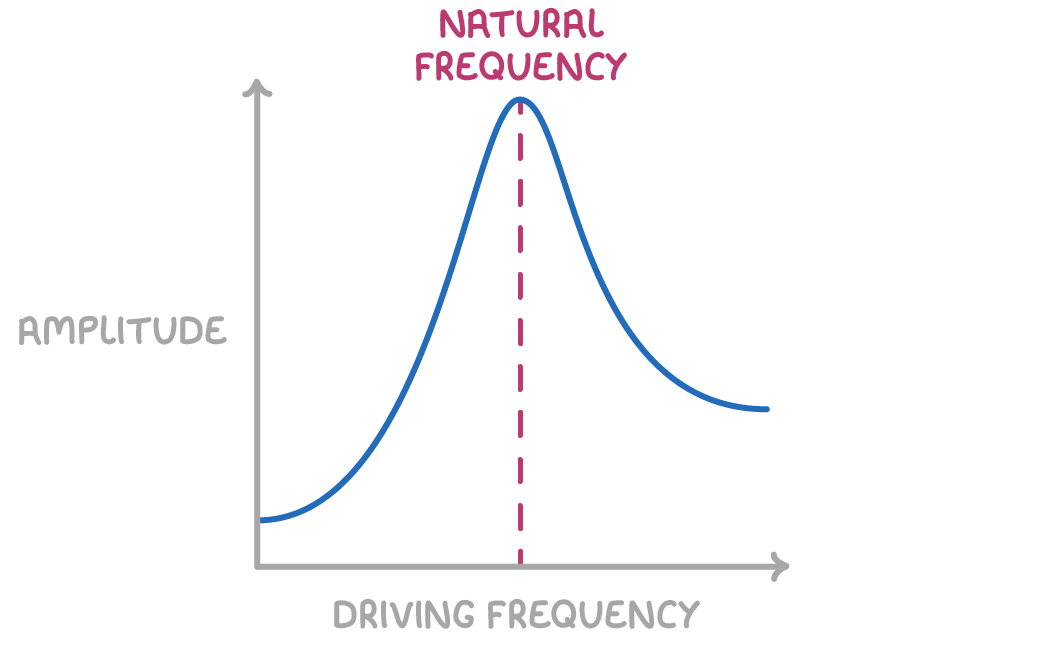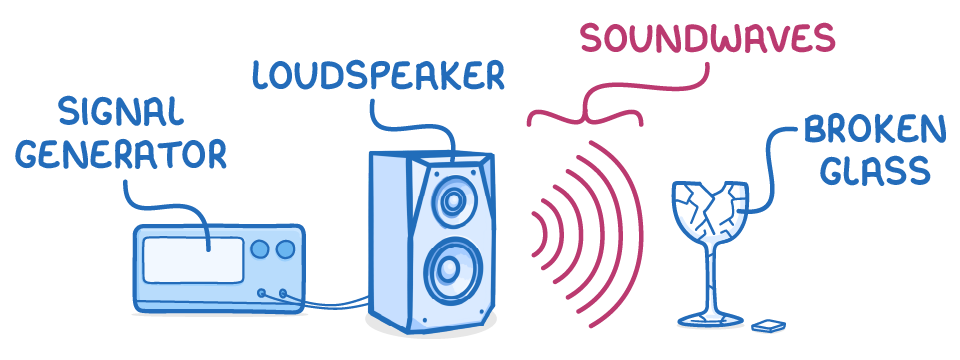Forced Vibrations & Resonance
This lesson covers:
- Understanding free vibrations and the conditions for their occurrence
- Defining forced vibrations and the role of external driving forces
- Explaining resonance and its relationship to natural and driving frequencies
- Examples demonstrating resonance phenomena
- The graphical relationship between amplitude, driving frequency, and natural frequency
Free vibrations
When an oscillating system, such as a mass on a spring, experiences no transfer of energy with its surroundings, it undergoes free (or natural) vibrations.
Key features:
- Occurs when the system is disturbed then allowed to vibrate naturally.
- No external forces act on the system.
- The frequency of these vibrations is known as the natural frequency.
- In ideal conditions, free vibrations continue indefinitely with constant amplitude.
However, friction and drag limit vibrations in real systems.
Forced vibrations

Forced vibrations happen when an external force with its own frequency acts on an oscillating system. This external frequency is called the driving frequency.
Key features:
- Vibrations caused by a periodic driving force vibrating the system.
- The amplitude and frequency of vibration depend on the driving force.
Resonance
When the driving frequency matches the natural frequency, the system vibrates with maximum amplitude. This phenomenon is called resonance.

Key points:
- Minimum amplitude when driving frequency is very different from the natural frequency.
- Resonance causes a spike in amplitude at the natural frequency.
- Can use graphs to determine natural frequencies from amplitude data.
For a resonating system:
- Maximum energy is transferred from the driving force to the system.
- Causing a rapid increase of vibration amplitude.
- The natural frequency is also called the resonant frequency.
Resonance allows relatively small driving forces to produce very large vibration amplitudes.
Examples of resonance

Resonance is not limited to mass-spring systems. There are many examples of resonance in everyday life:
- Organ pipes resonate from air vibrations at pipe openings.
- Pushing a swing at its natural frequency makes it resonate.
- Sound waves can resonate glass objects causing them to shatter.